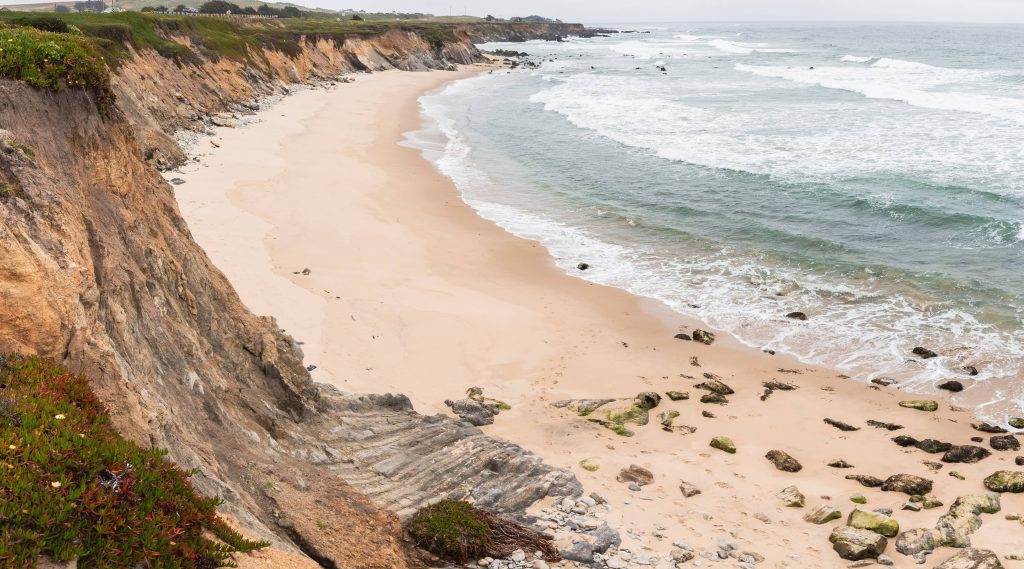
Beaches are picturesque destinations where people gather to soak up the sun, play in the sand, and relish the beauty of the coastline.
However, the tranquility of these sandy shores can be disrupted by an invisible force: beach erosion.
In this article, we will explore the mechanisms behind beach erosion, the impact of rising sea levels, the role of powerful storms, and the challenges posed by human activities.
We will also examine innovative solutions like geotextile walls, woven geotextiles, and geotube installations that aim to combat this persistent problem.
Beach erosion is a gradual process where the sandy expanse of a beach gradually diminishes, often resulting in the relocation of shoreline land into deeper waters offshore or alongshore into inlets, tidal shoals, and bays.
This natural phenomenon occurs due to a combination of factors such as the following, with each contributing to the gradual disappearance of our beloved beaches.
One of the primary drivers of beach erosion is rising sea levels. As the Earth’s climate undergoes changes, the melting of the polar ice caps and the thermal expansion of seawater are causing sea levels to rise.
The challenges of beach erosion are further exacerbated by climate change. Not only does climate change contribute to rising sea levels, but it also intensifies the severity and frequency of storms.
Coastal areas are directly impacted by these climate-driven changes, as sea-level rise and storm surges increasingly threaten the integrity of our beaches.
Coastal areas are particularly susceptible to the devastating effects of storms, especially those associated with tropical storms and hurricanes.
These powerful meteorological events generate ferocious waves that crash relentlessly onto the shoreline. The sheer force of these waves scours the beach, dislodging sand and causing erosion.
The frequency and intensity of these storms play a pivotal role in the degree of erosion experienced along a particular coastline.
Human activities often exacerbate beach erosion. Coastal development, including the construction of buildings, roads, and infrastructure, can disrupt the natural flow of sand along the shoreline.
Such alterations interfere with the beach’s ability to replenish itself naturally.
Additionally, the construction of seawalls and bulkheads, intended to protect coastal properties from waves, can inadvertently accelerate erosion.
These structures reflect wave energy back onto the beach, causing diminished beach width and, ultimately, loss.
Addressing beach erosion is a complex endeavour that requires a multifaceted approach. Innovative solutions like geotextiles offer promising methods to manage and mitigate erosion.
Geotextiles cover a range of materials designed to address erosion challenges effectively.
Geotextile walls act as barriers to trap and retain sand, preventing it from washing away. These structures provide a natural buffer against erosion by holding the beach in place.
Geotextile walls are especially valuable in areas with high erosion rates, helping to stabilise the shoreline.
Woven geotextiles are fabric-like materials engineered to withstand the forces of nature. They can be used to create durable erosion control solutions along coastlines.
Woven geotextiles offer versatility in their application, making them suitable for various beach protection projects.
Geotube installations involve the use of large, tubular structures made from geotextile materials. These tubes can be filled with sand or other materials and placed strategically along the shoreline.
Geotube installations serve as formidable barriers against erosion, effectively retaining sand and preventing its loss to the sea.
While these geotextile solutions hold promise in the battle against beach erosion, they must be integrated into a broader strategy that balances preservation with protection.
Beach nourishment remains a valuable tool, involving the addition of sand to eroded beaches to restore their natural beauty and safeguard coastal properties.
However, beach nourishment projects must adhere to stringent environmental regulations to minimise their impact on natural resources.
Beach erosion is an ongoing battle that requires a comprehensive and ecologically sensitive approach.
Rising sea levels, powerful storms, and human activities pose significant challenges to the preservation of our beloved coastlines. Innovative solutions like geotextiles, including geotextile walls, woven geotextiles, and geotube installations, offer hope in the fight against erosion.
However, our efforts to protect and preserve our beaches must strike a balance between safeguarding coastal properties and conserving the environment.
As we confront the impacts of climate change and the persistent threat of erosion, it is essential to remain vigilant in our commitment to the preservation of these natural wonders.
Copyright © Gateway Structure Sdn Bhd (199401025111). All Right Reserved.